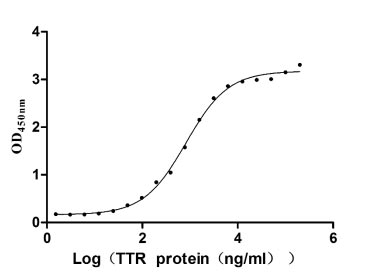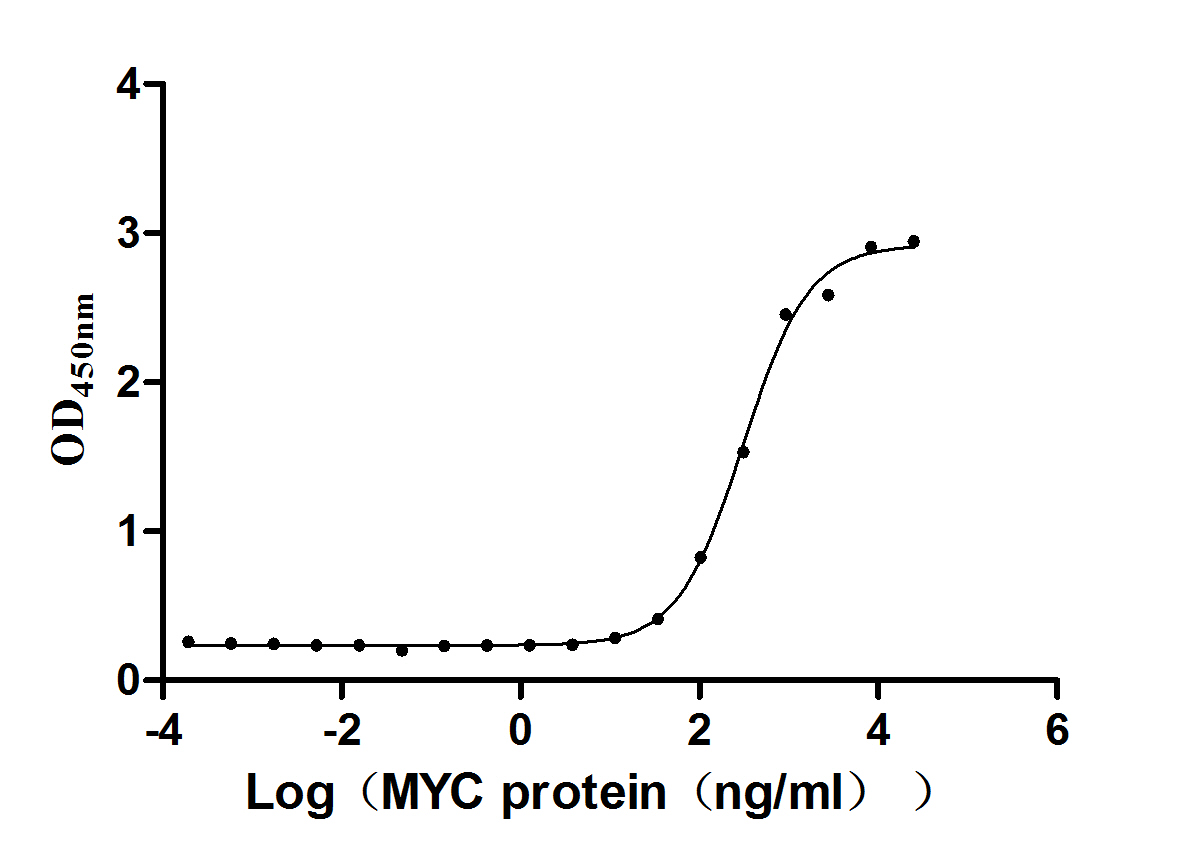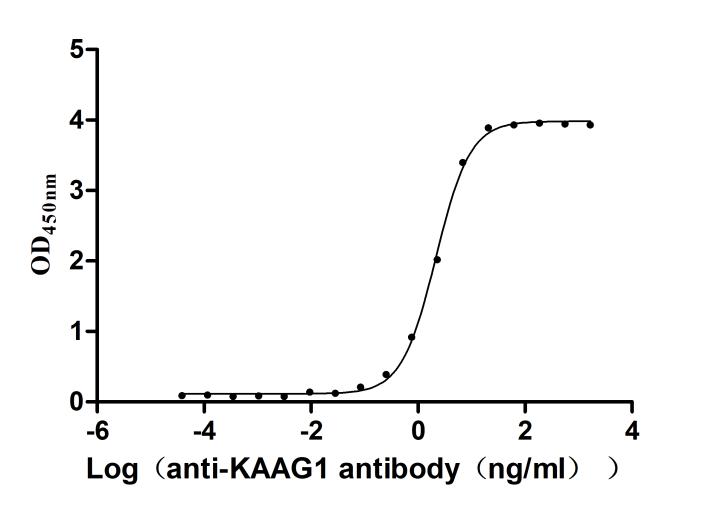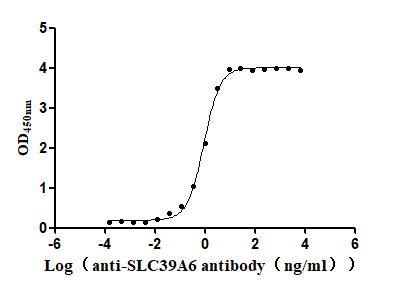Recombinant Mouse Ubiquitin carboxyl-terminal hydrolase 14 (Usp14)
-
中文名称:小鼠Usp14重组蛋白
-
货号:CSB-YP888360MO
-
规格:
-
来源:Yeast
-
其他:
-
中文名称:小鼠Usp14重组蛋白
-
货号:CSB-EP888360MO
-
规格:
-
来源:E.coli
-
其他:
-
中文名称:小鼠Usp14重组蛋白
-
货号:CSB-EP888360MO-B
-
规格:
-
来源:E.coli
-
共轭:Avi-tag Biotinylated
E. coli biotin ligase (BirA) is highly specific in covalently attaching biotin to the 15 amino acid AviTag peptide. This recombinant protein was biotinylated in vivo by AviTag-BirA technology, which method is BriA catalyzes amide linkage between the biotin and the specific lysine of the AviTag.
-
其他:
-
中文名称:小鼠Usp14重组蛋白
-
货号:CSB-BP888360MO
-
规格:
-
来源:Baculovirus
-
其他:
-
中文名称:小鼠Usp14重组蛋白
-
货号:CSB-MP888360MO
-
规格:
-
来源:Mammalian cell
-
其他:
产品详情
-
纯度:>85% (SDS-PAGE)
-
基因名:Usp14
-
Uniprot No.:
-
别名:Usp14; Ubiquitin carboxyl-terminal hydrolase 14; EC 3.4.19.12; Deubiquitinating enzyme 14; Ubiquitin thioesterase 14; Ubiquitin-specific-processing protease 14
-
种属:Mus musculus (Mouse)
-
蛋白长度:full length protein
-
表达区域:1-493
-
氨基酸序列MPLYSVTVKW GKEKFEGVEL NTDEPPMVFK AQLFALTGVQ PARQKVMVKG GTLKDDDWGN IKMKNGMTVL MMGSADALPE EPSAKTVFVE DMTEEQLATA MELPCGLTNL GNTCYMNATV QCIRSVPELK DALKRYAGAL RASGEMASAQ YITAALRDLF DSMDKTSSSI PPIILLQFLH MAFPQFAEKG EQGQYLQQDA NECWIQMMRV LQQKLEAIED DSGRETDSSS APAVTPSKKK SLIDQYFGVE FETTMKCTES EEEEVTKGKE NQLQLSCFIN QEVKYLFTGL KLRLQEEITK QSPTLQRNAL YIKSSKISRL PAYLTIQMVR FFYKEKESVN AKVLKDVKFP LMLDVYELCT PELQEKMVSF RSKFKDLEDK KVNQQPNAND KNSPPKEIKY EPFSFADDIG SNNCGYYDLQ AVLTHQGRSS SSGHYVSWVR RKQDEWIKFD DDKVSIVTPE DILRLSGGGD WHIAYVLLYG PRRVEIMEEE SEQ
-
蛋白标签:Tag type will be determined during the manufacturing process.
The tag type will be determined during production process. If you have specified tag type, please tell us and we will develop the specified tag preferentially. -
产品提供形式:Lyophilized powder
Note: We will preferentially ship the format that we have in stock, however, if you have any special requirement for the format, please remark your requirement when placing the order, we will prepare according to your demand. -
复溶:We recommend that this vial be briefly centrifuged prior to opening to bring the contents to the bottom. Please reconstitute protein in deionized sterile water to a concentration of 0.1-1.0 mg/mL.We recommend to add 5-50% of glycerol (final concentration) and aliquot for long-term storage at -20℃/-80℃. Our default final concentration of glycerol is 50%. Customers could use it as reference.
-
储存条件:Store at -20°C/-80°C upon receipt, aliquoting is necessary for mutiple use. Avoid repeated freeze-thaw cycles.
-
保质期:The shelf life is related to many factors, storage state, buffer ingredients, storage temperature and the stability of the protein itself.
Generally, the shelf life of liquid form is 6 months at -20°C/-80°C. The shelf life of lyophilized form is 12 months at -20°C/-80°C. -
货期:Delivery time may differ from different purchasing way or location, please kindly consult your local distributors for specific delivery time.Note: All of our proteins are default shipped with normal blue ice packs, if you request to ship with dry ice, please communicate with us in advance and extra fees will be charged.
-
注意事项:Repeated freezing and thawing is not recommended. Store working aliquots at 4°C for up to one week.
-
Datasheet :Please contact us to get it.
靶点详情
-
功能:Proteasome-associated deubiquitinase which releases ubiquitin from the proteasome targeted ubiquitinated proteins. Ensures the regeneration of ubiquitin at the proteasome. Is a reversibly associated subunit of the proteasome and a large fraction of proteasome-free protein exists within the cell. Required for the degradation of the chemokine receptor CXCR4 which is critical for CXCL12-induced cell chemotaxis. Serves also as a physiological inhibitor of endoplasmic reticulum-associated degradation (ERAD) under the non-stressed condition by inhibiting the degradation of unfolded endoplasmic reticulum proteins via interaction with ERN1. Plays a role in the innate immune defense against viruses by stabilizing the viral DNA sensor CGAS and thus inhibiting its autophagic degradation.
-
基因功能参考文献:
- the data indicate that functional Usp14 enhances direct Antigen presentation, preferentially of defective ribosomal product-derived peptides, suggesting that the processing of defective ribosomal product-derived peptides is in some ways different from other forms of Antigen. PMID: 29282303
- The homeostasis of Ubiquitin in USP14-/-mouse embryonic fibroblasts was markedly perturbed because of facilitated clearance of Ubiquitin. PMID: 29763934
- Usp14 and Ube3c cycle together on and off proteasomes, and the presence of ubiquitinated substrates promotes their association. This mechanism enables proteasome activity to adapt to the supply of substrates. PMID: 28396413
- analysis of the molecular mechanisms through which CBP stability is regulated by FBXL19 and USP14, which results in the modulation of chromatin remodeling and the expression of cytokine-encoding genes PMID: 28611184
- without a ubiquitinated substrate present, Usp14 suppresses multiple proteasomal activities, especially basal ATP consumption and degradation of non-ubiquitinated proteins. These allosteric effects thus reduce ATP hydrolysis by inactive proteasomes and nonspecific proteolysis and enhance proteasomal specificity for ubiquitinated proteins. PMID: 28416611
- USP14's catalytic activity is required for nervous system structure and function and has an ongoing role in NMJ synaptic transmission. USP14 regulation of the ubiquitination status of protein kinases, coordinates NMJ intracellular signaling pathways. PMID: 25575639
- Overexpression of the Usp14 reduces cellular aggregates in mutant Htt-expressing cells mainly via the ubiquitin proteasome system. PMID: 24951540
- USP14 modulates hippocampal short-term plasticity and vesicle number independent of its deubiquitinating activity. PMID: 24218545
- Differences in genetic background were shown to affect ubiquitin expression and dramatically alter the phenotypes caused by USP14 deficiency. PMID: 24358326
- Data indicate that increased levels of phosphorylated tau correlated with the onset of axonal varicosities in the ubiquitin-specific protease 14 (Usp14)-deficient mice. PMID: 23144711
- miR-124 promotes neuronal survival under ischemic conditions via Usp14-dependent REST degradation. PMID: 23754622
- Oxidative stress increasd USP14 expression, and beta-carotene dose-dependently inhibited increased expression in mouse skeletal muscle myotubes. PMID: 23046823
- USP14 has a role in regulating synaptic activity in mammals PMID: 12368914
- Usp14 functions to maintain the cellular levels of monomeric ubiquitin in mammalian cells, and that alterations in the levels of ubiquitin may contribute to neurological disease PMID: 16190881
- A mutated axJ gene locus, encoding the ubiquitin-specific protease 14 (Usp14), negatively influences GABAA receptor turnover. PMID: 19759851
显示更多
收起更多
-
亚细胞定位:Cytoplasm. Cell membrane; Peripheral membrane protein.
-
蛋白家族:Peptidase C19 family, USP14/UBP6 subfamily
-
数据库链接:
KEGG: mmu:59025
STRING: 10090.ENSMUSP00000089728
UniGene: Mm.329277
Most popular with customers
-
Recombinant Human Retinol-binding protein 4 (RBP4) (Active)
Express system: Mammalian cell
Species: Homo sapiens (Human)
-
Recombinant Human papillomavirus type 16 Protein E7 (E7) (Active)
Express system: E.coli
Species: Human papillomavirus type 16
-
Recombinant Mouse Retinol-binding protein 4 (Rbp4) (Active)
Express system: Mammalian cell
Species: Mus musculus (Mouse)
-
Recombinant Mouse Gastric inhibitory polypeptide receptor (Gipr), partial (Active)
Express system: Mammalian cell
Species: Mus musculus (Mouse)
-
Recombinant Human Kidney-associated antigen 1(KAAG1) (Active)
Express system: E.coli
Species: Homo sapiens (Human)
-
Recombinant Human Kidney-associated antigen 1(KAAG1) (Active)
Express system: Baculovirus
Species: Homo sapiens (Human)
-
Recombinant Macaca fascicularis Zinc transporter ZIP6 isoform X1(SLC39A6),partial (Active)
Express system: Baculovirus
Species: Macaca fascicularis (Crab-eating macaque) (Cynomolgus monkey)
-
Recombinant Human Interleukin-12 receptor subunit beta-1(IL12RB1),partial (Active)
Express system: Mammalian cell
Species: Homo sapiens (Human)




















